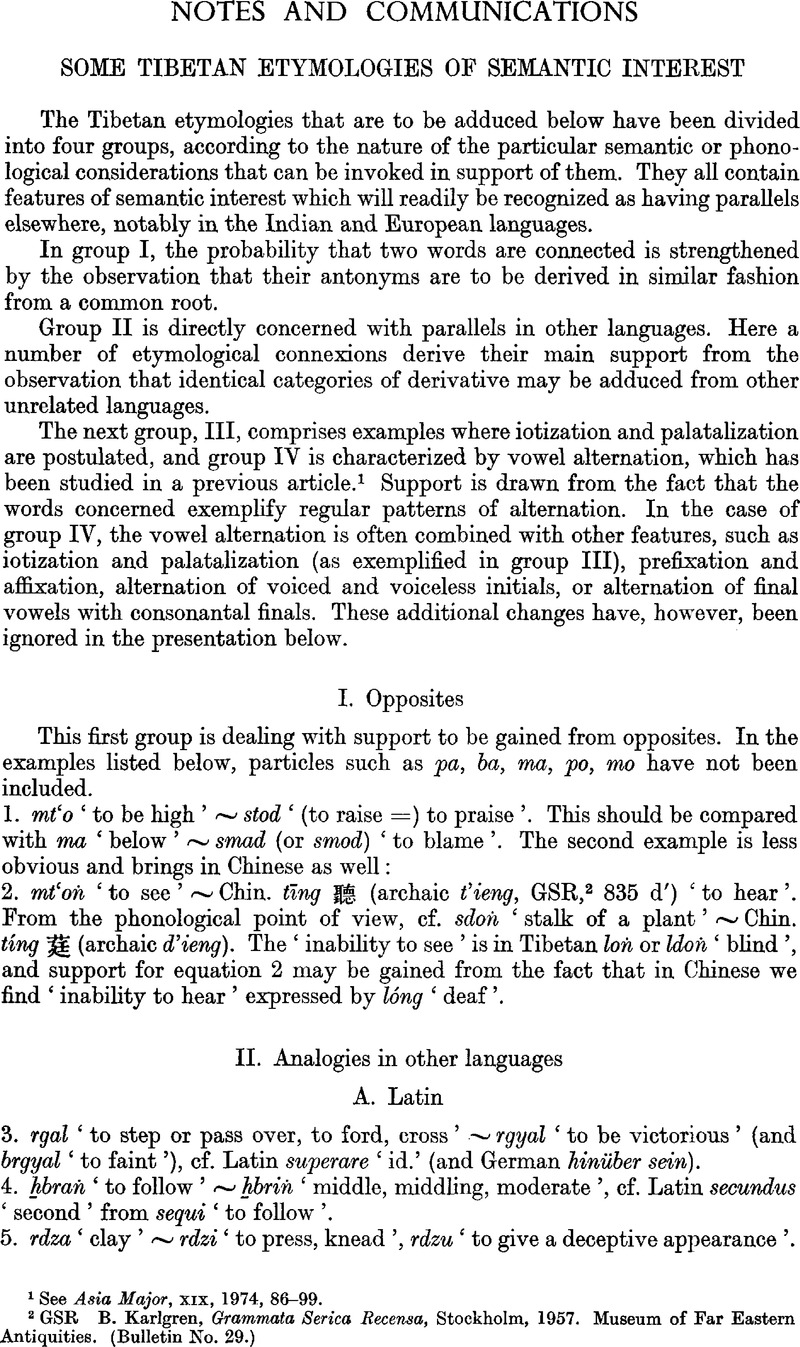Article contents
Some Tibetan Etymologies of Semantic Interest
Published online by Cambridge University Press: 24 December 2009
Abstract

- Type
- Notes and Communications
- Information
- Bulletin of the School of Oriental and African Studies , Volume 43 , Issue 1 , February 1980 , pp. 132 - 136
- Copyright
- Copyright © School of Oriental and African Studies 1980
References
1 See Asia Major, XIX, 1974, 86–99Google Scholar.
2 GSR Karlgren, B., Grammata Serica Recensa, Stockholm, 1957. Museum of Far Eastern Antiquities. (Bulletin No. 29.)Google Scholar
3 See W. B. Henning memorial volume, ed. I. Gershevitch, and Boyce, M., London, 1970, 406–8Google Scholar.
4 See ‘Alternation of final vowel with final dental nasal or plosive in Tibetan’, BSOAS, XL, 1, 1977, 52, no. 23Google Scholar.
5 See ‘Cognates of Tibetan rahs-pa “entire, complete” with guttural stem initial,’ in Bulletin of the Institute of History and Philology, Academia Sinica, Taipei, Taiwan, XXXIX, 1969, 287–9Google Scholar.
6 See BSOAS. XXXVII, 3. 1975, 611–14Google Scholar. For no. 15, of. I A 6 and note 7; for no. 16, cf. I A 2; for no. 17, cf. I B 3.
7 see the article quoted in note 1. Detailed references to nos. 18–34 have been given in brackets after each number.
8 Zentralasiatische Studien, VII, 1973, 437Google Scholar.
- 2
- Cited by




